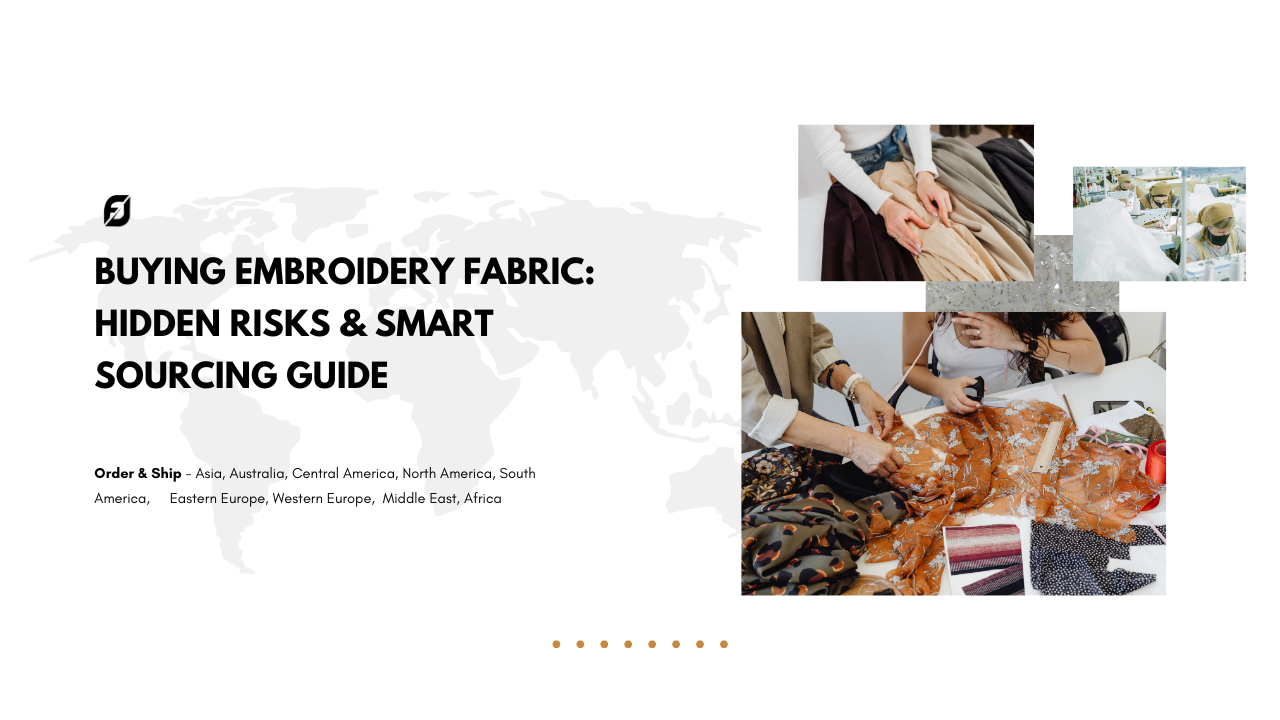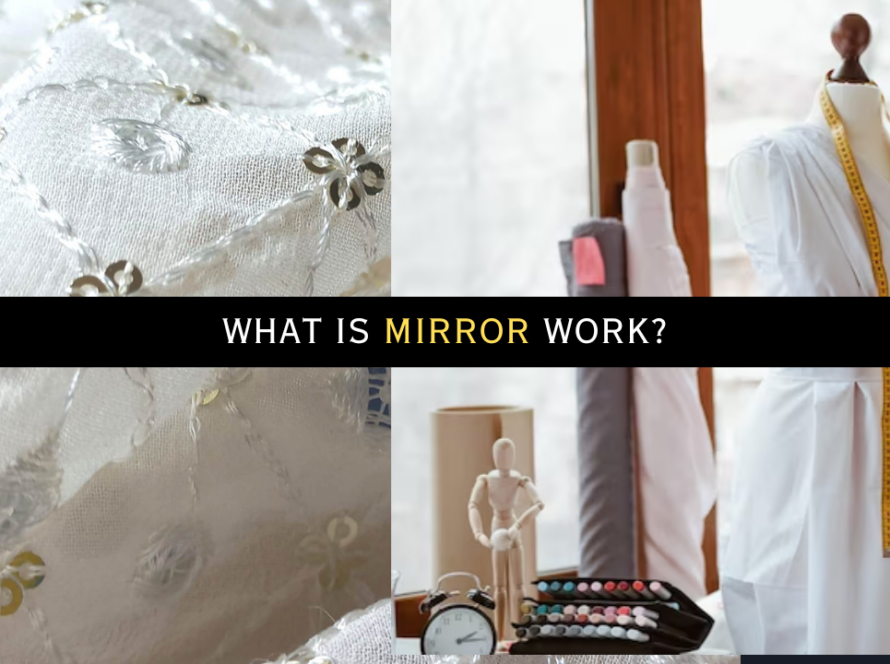In today’s world, the fast fashion industry is booming, leading to a rapidly increasing demand for clothing for men, women, and children. However, this surge in demand presents a significant challenge in maintaining the quality of garments globally. Nearly 80 to 90% of fabrics are not recyclable due to their high chemical content. This has intensified the need for sustainable fabrics, although the production and supply chain for such materials remain underdeveloped.
China, with its focus on mass production, often compromises on quality, resulting in products that can harm the environment. Despite this, there is an enormous volume of such fabrics being produced worldwide.
The Rising Trend of Sustainable Fabrics: How Companies Like Madhav Fashion Are Leading the Way
Amid this scenario, companies like Madhav Fashion are dedicated to the growing demand for high-quality fabrics. Madhav Fashion, among other Indian companies, is engaged in the large-scale production of sustainable and low-chemical-based textiles. These companies also ensure that the finished apparel does not harm the environment or human health.

Prominent global brands are now partnering directly with companies like Madhav Fashion to obtain quality fabrics that align with the latest trends. This collaboration not only ensures the provision of superior fabrics but also supports the movement towards more sustainable fashion.
The Fast Fashion Challenge
The fast fashion industry has revolutionized how we consume clothes, offering trendy and affordable apparel at a rapid pace. However, this convenience comes at a cost. The environmental impact of fast fashion is alarming, with a significant portion of textiles ending up in landfills due to their non-recyclable nature. The heavy use of chemicals in fabric production further exacerbates the problem, making the need for sustainable alternatives more urgent than ever.
The Role of Sustainable Fabrics
Sustainable fabrics are designed to minimize environmental impact and reduce the chemical load on both the ecosystem and human health. These fabrics often use organic or recycled materials and employ eco-friendly manufacturing processes. The challenge lies in scaling up the production of such fabrics and establishing a robust supply chain to meet the growing demand.
Madhav Fashion: A Beacon of Sustainability
Madhav Fashion stands out as a leader in the movement towards sustainable textile production. The company focuses on creating fabrics that are not only high in quality but also environmentally friendly. By reducing the use of harmful chemicals and adopting sustainable practices, Madhav Fashion ensures that its products are safe for consumers and the planet.
Global Partnerships and Trend Alignment
The collaboration between major global brands and companies like Madhav Fashion signifies a shift towards more responsible fashion. These partnerships are crucial in driving the adoption of sustainable fabrics on a larger scale. Brands benefit from access to high-quality, trendy fabrics, while consumers can enjoy stylish clothing that doesn’t compromise on environmental or health standards.

The rise of sustainable fabrics is a positive development in the fashion industry. Companies like Madhav Fashion are at the forefront of this change, demonstrating that it is possible to produce beautiful, high-quality textiles without harming the environment. As more brands and consumers embrace sustainability, the future of fashion looks promising, with a potential for significant positive impact on both the planet and society.
______________________________
1. What is the environmental impact of fast fashion?
The environmental impact of fast fashion is significant and multifaceted. Fast fashion refers to the rapid production of inexpensive clothing to meet the latest trends. This model leads to substantial waste, as garments are often discarded after only a few wears. Approximately 80-90% of these textiles are non-recyclable due to their high chemical content, resulting in massive landfill contributions. Moreover, the production processes involve extensive use of water, energy, and chemicals, which can lead to water pollution and high carbon emissions. The heavy reliance on synthetic fibers, such as polyester, further exacerbates the problem as they shed microplastics into water bodies during washing. These microplastics harm marine life and can enter the food chain, affecting human health. Additionally, the fast fashion industry is linked to poor labor practices, including low wages and unsafe working conditions in developing countries. This combination of environmental degradation and social issues highlights the urgent need for more sustainable practices in the fashion industry. Companies and consumers alike must advocate for and adopt eco-friendly materials and ethical production processes to mitigate these harmful effects.
2. What makes fabrics non-recyclable in the fast fashion industry?
Fabrics in the fast fashion industry are often non-recyclable due to several factors. One primary reason is the extensive use of synthetic fibers like polyester, nylon, and acrylic. These materials are derived from petroleum-based products and are difficult to break down and recycle. Additionally, many garments are blends of natural and synthetic fibers, complicating the recycling process as different materials require different recycling methods. The presence of dyes, finishes, and other chemical treatments further hampers recyclability. These chemicals are used to achieve desired textures, colors, and functionalities but make the fibers unsuitable for recycling. Moreover, fast fashion emphasizes low cost and rapid production, leading to poor quality fabrics that wear out quickly and lose their value for recycling. The lack of standardized recycling processes and infrastructure also contributes to the problem, as many recycling facilities are not equipped to handle the diverse and complex makeup of fast fashion textiles. These issues highlight the need for innovation in fabric recycling technologies and more sustainable production practices to reduce the environmental footprint of the fashion industry.
3. How are companies like Madhav Fashion addressing the issue of non-recyclable fabrics?
Companies like Madhav Fashion are tackling the issue of non-recyclable fabrics by adopting sustainable and eco-friendly production methods. They focus on using organic and natural fibers, which are more easily recyclable and biodegradable compared to synthetic materials. These natural fibers, such as organic cotton, linen, and hemp, are grown without harmful pesticides and chemicals, reducing environmental impact from the outset. Madhav Fashion also emphasizes the use of low-chemical processes in fabric treatment and dyeing, ensuring that the end products are free from harmful substances and safe for recycling. Additionally, the company is investing in research and development to innovate new sustainable materials and improve existing recycling technologies. By implementing a circular economy model, Madhav Fashion aims to design products with their end-of-life in mind, promoting recycling and reuse. Collaborations with global brands also help in setting higher standards for sustainable practices within the industry. Through these efforts, Madhav Fashion is contributing to a more sustainable fashion ecosystem, encouraging a shift away from disposable fast fashion towards more durable, recyclable, and environmentally friendly textiles.
4. Why is there a growing demand for sustainable fabrics?
The growing demand for sustainable fabrics is driven by increased awareness of the environmental and social impacts of traditional textile production. Consumers are becoming more conscious of the ecological footprint associated with fast fashion, including pollution, resource depletion, and waste generation. This awareness has led to a shift in consumer preferences towards eco-friendly and ethically produced clothing. Sustainable fabrics, made from organic, recycled, or renewable materials, offer a way to reduce these negative impacts. They are produced using methods that minimize water and energy use, limit the use of harmful chemicals, and promote fair labor practices. Additionally, the durability and quality of sustainable fabrics mean that garments last longer, reducing the need for frequent replacements and lowering overall consumption. Brands and designers are also recognizing the market potential and are increasingly incorporating sustainable materials into their collections. Regulatory pressures and corporate social responsibility commitments further drive this shift, as companies seek to align with environmental standards and ethical practices. Overall, the demand for sustainable fabrics reflects a broader trend towards more responsible and conscious consumption in the fashion industry.
5. How does Madhav Fashion ensure the sustainability of its fabrics?
Madhav Fashion ensures the sustainability of its fabrics through a comprehensive approach that includes the use of eco-friendly materials, sustainable production processes, and ethical business practices. The company prioritizes organic and natural fibers, such as organic cotton, hemp, and bamboo, which are grown without harmful pesticides and require less water. These materials are not only biodegradable but also healthier for the environment and consumers. In production, Madhav Fashion employs low-chemical and water-efficient dyeing and finishing techniques, reducing pollution and conserving resources. They also invest in advanced technologies to enhance the durability and recyclability of their fabrics. Madhav Fashion’s commitment to sustainability extends to their supply chain, where they work closely with suppliers who adhere to ethical labor practices and environmental standards. By conducting regular audits and fostering transparent relationships, the company ensures that their sustainability goals are met at every stage of production. Additionally, Madhav Fashion engages in continuous research and development to explore innovative materials and methods that further enhance sustainability. Through these efforts, the company not only produces high-quality, eco-friendly fabrics but also sets a benchmark for sustainability in the textile industry.
6. What are the benefits of using sustainable fabrics for consumers and the environment?
Using sustainable fabrics offers numerous benefits for both consumers and the environment. For consumers, sustainable fabrics are often made from natural or organic fibers that are free from harmful chemicals, making them safer and healthier to wear. These materials tend to be softer and more breathable, providing greater comfort. Additionally, garments made from sustainable fabrics are typically of higher quality and durability, reducing the need for frequent replacements and saving money in the long run. From an environmental perspective, sustainable fabrics have a lower carbon footprint as they require less energy and water to produce. They also minimize pollution since they use fewer chemicals and often come from renewable resources. Sustainable fabrics are designed to be biodegradable or recyclable, reducing the volume of waste sent to landfills. The use of eco-friendly materials also supports biodiversity and reduces the strain on ecosystems. By choosing sustainable fabrics, consumers contribute to a more sustainable fashion industry, promoting ethical practices and environmental stewardship. This shift helps mitigate climate change, conserve natural resources, and foster a healthier planet for future generations.
7. How are global brands integrating sustainable fabrics into their collections?
Global brands are integrating sustainable fabrics into their collections through a variety of strategies aimed at reducing their environmental impact and meeting consumer demand for eco-friendly products. Many brands are sourcing organic and recycled materials to replace conventional fabrics. For instance, they are using organic cotton, recycled polyester, and innovative materials like Tencel and bamboo, which have lower environmental footprints. These brands are also adopting sustainable production practices, such as water-saving dyeing techniques, reducing chemical use, and implementing energy-efficient processes. Collaborations with sustainable textile producers, like Madhav Fashion, help brands access high-quality, eco-friendly fabrics. Additionally, brands are investing in research and development to create new sustainable materials and improve the recyclability of their products. Transparency and traceability are becoming key components of their sustainability strategies, with brands providing detailed information about the sourcing and production processes of their fabrics. Marketing efforts highlight these sustainable practices, appealing to environmentally conscious consumers. By integrating sustainable fabrics, global brands not only enhance their corporate social responsibility but also set industry standards for sustainability, driving broader changes in the fashion sector.
8. What challenges do companies face in producing and supplying sustainable fabrics?
Companies face several challenges in producing and supplying sustainable fabrics. One major challenge is the higher cost of sustainable materials compared to conventional fabrics. Organic and eco-friendly fibers often require more expensive cultivation and processing methods, which can drive up costs. Additionally, there is limited availability of sustainable raw materials, as the supply chain for these materials is not as developed or widespread as for traditional textiles. This can lead to supply shortages and higher prices. Another challenge is the complexity of sustainable production processes, which may require specialized equipment and technologies. Companies also need to ensure that their entire supply chain adheres to sustainable and ethical practices, which can be difficult to monitor and enforce. Consumer education and demand for sustainable products are still growing, so companies must invest in marketing and awareness campaigns to drive sales. Moreover, regulatory standards and certifications for sustainability can vary, creating compliance challenges. Despite these obstacles, companies like Madhav Fashion are committed to overcoming these challenges through innovation, collaboration, and a steadfast dedication to sustainability.
9. How does the partnership between global brands and companies like Madhav Fashion benefit the fashion industry?
The partnership between global brands and companies like Madhav Fashion benefits the fashion industry by promoting sustainability, enhancing quality, and driving innovation. Such collaborations allow global brands to access high-quality, sustainable fabrics that align with consumer demand for eco-friendly products. By incorporating these fabrics into their collections, brands can reduce their environmental footprint and demonstrate their commitment to corporate social responsibility. This partnership also encourages the adoption of best practices in sustainable production, setting higher industry standards. For Madhav Fashion, working with renowned global brands provides opportunities for growth and market expansion, allowing them to scale their sustainable initiatives. These collaborations foster innovation as both parties invest in research and development to create new materials and improve existing ones. Additionally, partnerships help streamline the supply chain, ensuring that sustainable practices are maintained from raw material sourcing to finished product. Consumers benefit from greater availability of sustainable fashion choices, contributing to a more environmentally conscious market. Overall, such partnerships drive positive change across the fashion industry, promoting a more sustainable, ethical, and forward-thinking approach to apparel production.






